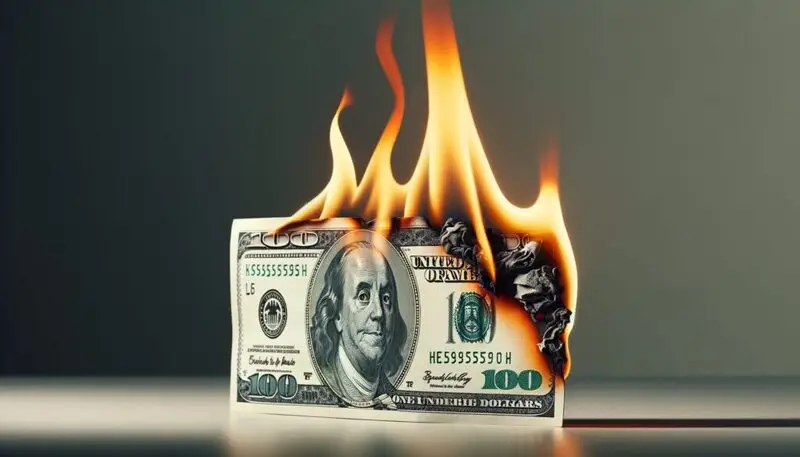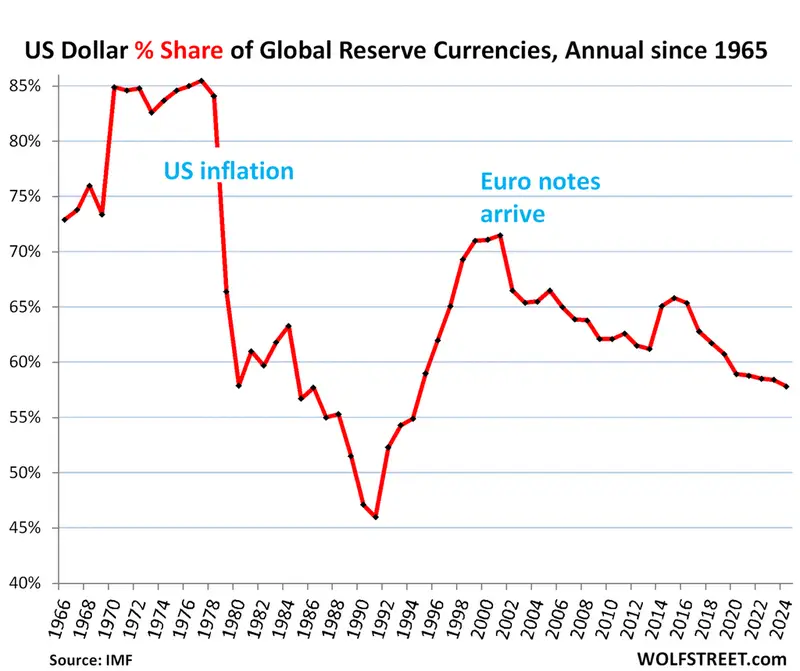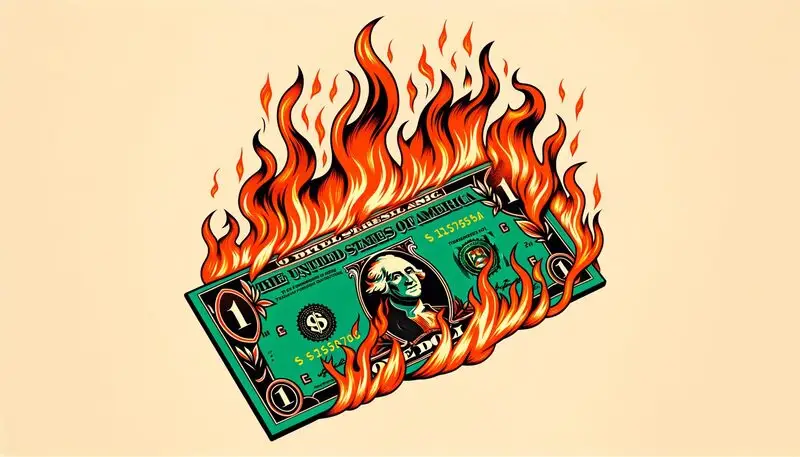Donald Trump has been going above and beyond to save the dominance of the US dollar. The de-dollarization initiative has been garnering steam over the past few days. While several countries have been uniting to bring down the greenback, other factors were also pushing it down. The US dollar has been the primary reserve asset for the longest time now. More recently, it was brought to light that the dollar’s share among global reserve currencies was seen dipping down.
Also Read: China Imposes 34% Tariffs on All US Goods From April 10
US Dollar’s Reserve Currency Status Under Threat?

The US dollar’s role as the world’s dominant reserve currency has long been a key pillar supporting America’s ability to run large fiscal and trade deficits. Wolf Richter, analyst and publisher of Wolf Street, pointed out that this privileged position has allowed the US to borrow cheaply and extensively. This is all thanks to foreign central banks holding trillions in dollar-denominated assets, which include Treasury bonds, corporate debt, and even stocks.
But that dominance isn’t guaranteed forever. As more countries diversify away from the dollar. The shift is gradual, but the underlying risks are quietly building, with long-term implications for US economic stability and global financial dynamics.
During the end of 2024, foreign central banks held $6.63 trillion in US dollars, which was denominated securities. This marked a $59 billion decline from the previous year. Notably, the US dollar’s share of global allocated exchange reserves fell to 57.8%. This is its lowest level since 1994. Over the past decade, the dollar’s dominance has dropped by 7.3 percentage points, reflecting a steady shift by central banks toward diversification into non-dollar currencies and gold.

Also Read: 10 ASEAN Countries Ready to Trade in Local Currencies & Not US Dollar
What About Other Currencies?
The euro is not displacing the US dollar as the reserve currency. Richter said, “The euro has been the #2 global reserve currency, with holdings at $2.27 trillion at the end of 2024. Its share has been around 20% for years, with a low of 19.1% in 2016 and a high of 21.3% in 2020. In Q4, the euro’s share was 19.8%.”
While this might not be a direct threat to the dollar, it could benefit the de-dollarization initiative that BRICS nations have been working towards. Currencies of countries part of this, like China, play a dainty role. Despite being the second largest economy, its currency, the renminbi accounts for only 2.2% of the global reserve share. Richter added,
“And it has lost ground against the USD and other currencies since 2022. Central banks have not been enamored with RMB-denominated assets due to China’s capital controls, the RMB’s convertibility issues, and other complexities.”
Also Read: Kyrgyzstan Launches Gold-Backed Stablecoin as a Strategic Alternative to CBDCs






